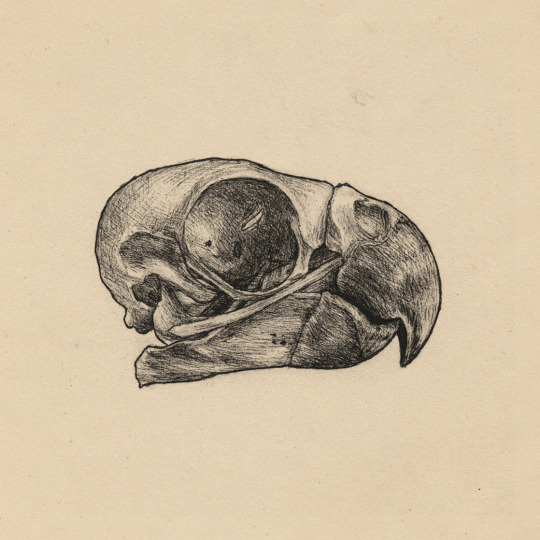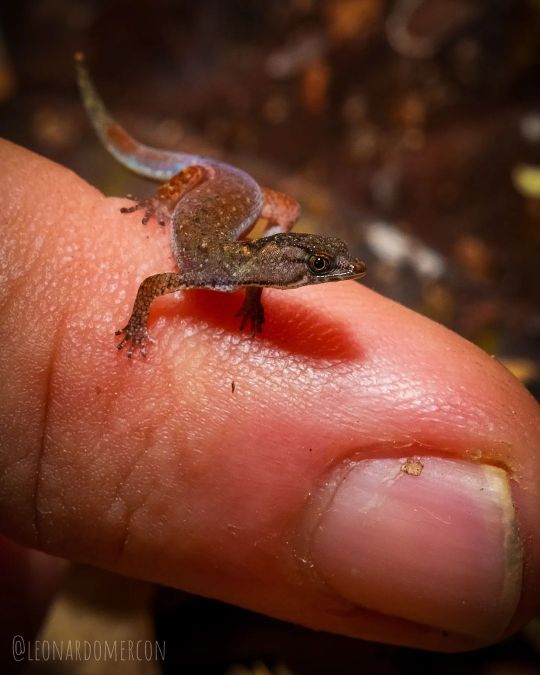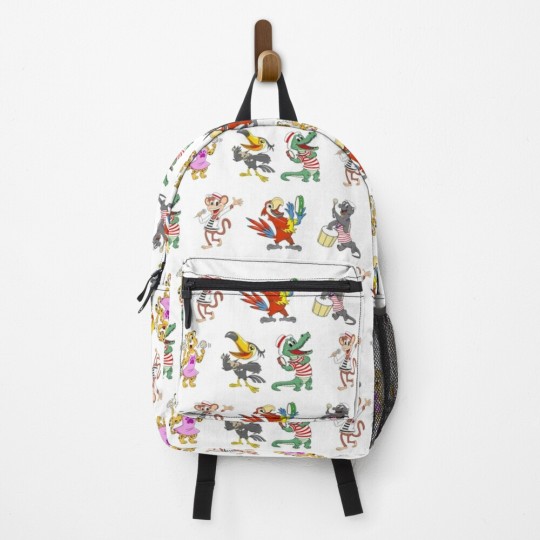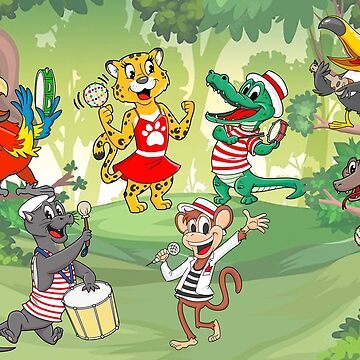#amazon fauna
Explore tagged Tumblr posts
Text
#wild life#animals#cat#brazilian fauna#exotic animals from brazil#brazil animal illustrations#brazilian tropical animals#brazilian wildlife art#animal native to brazil#amazon fauna#animals from brazil#national wildlife#of animals from the atlantic forest#puppy#feline#amazon#jungle#animal#bird#nature#monkey#parrot#wild#wild animals#forest#amazonia#turquoise fronted amazon#blue fronted amazon#bird portrait painting#realistic parrot painting
2 notes
·
View notes
Text
Uncharismatic Fact of the Day
The Amazon Molly might not be a true Amazonian warrior, but they do carry on the tradition of being an all-female group! This species reproduces via gynogenisis, in which they mate with a male from a closely related species to trigger the release of eggs but the sperm is destroyed before they can fertilize them. Instead, the eggs develop into identical clones of their mother.

(Image: an Amazon Molly (Poecilia formosa) by Dr. Manfred Schartl)
#amazon molly#Cyprinodontiformes#Poeciliidae#toothcarps#ray-finned fish#bony fish#fish#uncharismatic facts#queer fauna#nature is queer
207 notes
·
View notes
Text
Alms For The Poor

A torn and tattered Royal Water Lily (Victoria amazonica) receiving alms in the botanic gardens. Photo credit: Jonathan Chua.
Despite having underexposed this by 1-2/3 stops, highlights in some of the coins had still appeared to be clipped.
#photographers on tumblr#amazon lily pad photos#canon eos rp#canon photography#flora fauna#flora photography#flora pics#photography tips#royal water lily#tamron 16-300mm#Victoria amazonica
11 notes
·
View notes
Text

Amazon parrot skull tattoo design I drew for Karla~ Feel free to reach out if you'd like me to design a tattoo for you! Website | Instagram | Tiktok | Shop
#artists on tumblr#illustration#parrot skull#parrot#fauna#flora and fauna#tattoo design#tattoo#custom tattoo#amazon parrot#art#ink#nature#drawing#sketchbook#dark academia#whimsigoth#scientific illustration
95 notes
·
View notes
Text
I will be one of Til Fauna's top listeners on spotify this year 🫡😤
#it's a mantra and a determined war cry#idk what I'm saying tbh#I will be in the top percent of their listeners if its the last thing I do lmao#need to make up for the time lost listening on amazon music#(which honestly... still my app of choice)#til fauna#til fauna band#very much so#love them so much#putting them on repeat today
8 notes
·
View notes
Text

Love this one! More from the Felidae family. The turn now is for the biggest in America. Jaguar At first glance, Jaguars and Leopards are not so easy to differentiate. They are like two brothers. One's appearance, the leopard, looks more graceful and stylized. While the Jaguar has a more bulky body and its legs are shorter. One is agile while the other one is made to wrestle. However, the biggest difference is that the leopard lives in Africa, Asia, and Oceania, while the Jaguar is found in America. So if you are in Kenya, be 100% sure you are seeing a leopard. _________________________________________ Photo Reference Credits: Gary Morris __________________________________________ Thank you guys for your support. Love in the way of likes reblogs and follows is very much appreciated. If is more than love, you can tip me too :). One animal or more every week. Would love to do more than one but the illustrating part takes a lot of time X(.
#jaguar#feline#big cats#catlove#cute animals#drawing animals#illustration#drawing#scientific illustration#illo#wild animals#wildlife#animals#artist on tumblr#mammals#animal#inforgraphics#conservation#fauna#amazon
47 notes
·
View notes
Text
Download. Color. Share.


Butterflies on Flowers: Coloring Book for Adults
More free coloring pages on Pinterest.
#amazon#butterfly#flower#nature#butterflyonflower#floral#giftideas#coloring#coloringbook#coloringbookforadults#adultcoloringbook#freetime#relax#hobby#fun#roses#orchid#wildflower#insect#butterflyswings#animal#fauna#bouquet#decoration#wildlife#delicate#subtle#grayscale#pastime#color
3 notes
·
View notes
Photo

E essa pequenina que encontramos na Amazônia!? Encontramos delas com certa facilidade na serrapilheira (chão coberto de folhas) da floresta Amazônica. Eu estava acompanhando a pesquisa do colega @thiagobiotrips e ele me apresentou essa criaturinha chamada de Lagartixinha. Fiquei fascinado pelo tamanho diminuto do indivíduo adulto (esse da foto). Lindo né!? 💚 🗺📍Amazônia, Brasil. Em viagem acompanhando as primeiras edições da Biotrips na Amazônia do @thiagobiotrips . Com apoio da @iguanatour 📷 @leonardomercon #lagartixa #lagartixinha #lagarto #lizard #reptil #repteis #pequeno #minusculo #lizard #gueko #reptile #reptiles #biotrips #amazonia #amazon # #wildlife #faunabrasileira #animais #nature #natureza #wildlife #faunabrasileira #fauna #fotografiadenatureza #fotografodenatureza #ultimosrefugios 🫂Gostaria de te agradecer se você é alguém que se importa! Que tem empatia pelas pessoas, pelos animais... pela natureza. Você é sempre bem-vindo em meus espaços digitais! 💚 (em Amazônia Brasileira) https://www.instagram.com/p/CmpVG10P14g/?igshid=NGJjMDIxMWI=
#lagartixa#lagartixinha#lagarto#lizard#reptil#repteis#pequeno#minusculo#gueko#reptile#reptiles#biotrips#amazonia#amazon#wildlife#faunabrasileira#animais#nature#natureza#fauna#fotografiadenatureza#fotografodenatureza#ultimosrefugios
2 notes
·
View notes
Text
#shopee#temu#temu shopping#lazada#fcc#amazon#shopify#technology#temufinds#imogen temult#bio#bionicle#bioware#animalitos#biodiversity#messy bios#biology#fish#animals#critters#fauna
1 note
·
View note
Photo





(via "animais no samba" A-Line Dress for Sale by pjcriativo)
0 notes
Text
Today, I'm reviewing Spread: Tales of Deadly Flora, a collection of fabulous (and slightly disturbing) short stories) Highly recommended #blogtour
Today, I'm reviewing Spread: Tales of Deadly Flora, a collection of fabulous (and slightly disturbing) short stories) Highly recommended #blogtour @rararesources @pageturnpress
Here’s the blurb Green thumbs beware. Plants are beautiful, peaceful, abundant, and life-sustaining. But what if something sinister took root in the soil, awakening to unleash slashing thorns, squeezing vines, or haunting greenery that lured you in? Perhaps blooms on distant planets could claim your heart, hitch a ride to Earth on a meteor, or simply poison you with their essence. Imagine a…

View On WordPress
#A Page Turn Press Anthology#Amazon#Blog Tour#book review#Holly Rae Garcia#New Release#RA Clarke#Rachel&039;s Random Resources#Spread#Tales of Deadly Fauna
0 notes
Text


Good Golly Miss Amazon Molly!
The Amazon molly (Poecilia formosa) is a species of fish found only in the Tuxpan River, the Rio Grande, and the Nueces River in northern Mexico and the southern United States. Within these rivers, P. formosa typically prefers slower moving streams and ditches with plenty of vegetation, and are usually found in freshwater systems.
Amazon mollies are rather small and plain. The body is teardrop-shaped, and adults only grow up to 10 cm (3 in) long. They are mainly silver in color, although they may have rows of small, light brown spots running down their sides. In addition, some individuals may have black spots along their dorsal and tail fins.
Like most other mollies, the Amazon molly is an omnivore. They may feed on algae, seaweed, insects, and mosquito larvae. In turn, they themselves can be prey for larger aquatic insects like giant water bugs, other fishes, alligators, frogs, egrets and herons, and racoons. To avoid predators, P. formosa tends to stay in groups where it is less easy to be singled out.
Perhaps the most interesting feature of the Amazon molly are its reproductive habits. This species is entirely female, and reproduces via a process called gynogenesis. First, females are courted by males from other molly species such as P. latipinna, P. mexicana, P. latipunctata, or P. sphenops. Mating triggers the release of eggs, but the male's sperm is destroyed before it can fertilize them. Instead, the male gets the advantage of increased attractiveness to females of their own species, as these females are more likely to mate with males that have already mated with P. formosa.
After mating, the female broods her eggs for 30-40 days. She then gives live birth to anywhere from 60 to 100 fry, which are all clones of their mother. These young recieve no further parental care, but are fairly independent and are fully capable of reproduction after about 1-6 months, depending on the temperature of the water; warmer waters increase the rate of maturity. Individuals can live anywhere from 1-3 years in the wild.
Conservation status: the IUCN considers the Amazon molly to be Least Concern. However, one of the species that are used to trigger reproduction, the broadspotted molly (Poecilia latipunctata) is Critically Endangered. Primary threats to the Amazon molly include habitat degradation or loss due to construction and damming.
If you like what I do, consider leaving a tip or buying me a ko-fi!
Photos
Dr. Manfred Schartl
#Amazon molly#Cyprinodontiformes#Poeciliidae#mollies#poeciliid fish#ray-finned fish#bony fish#fish#freshwater fauna#freshwater fish#rivers#river fish#central america#north america#animal facts#biology#zoology#ecology#queer fauna#nature is queer
131 notes
·
View notes
Text
On The Hammock

An Amazon Milk Frog resting comfortably in its favourite perch in the local zoo. Photo credit: Eleanor Chua.
The tank was dimly lit because of the frog’s nocturnal nature. So ISO had need to be pushed up to 6400 to get a 1/160-second shutter speed for the 300mm focal length. This had resulted in a noise level of some 15 that had to be fixed in post.
#photographers on tumblr#amazon milk frog#canon eos-m5#canon photography#flora fauna#photography editing#photography tips#reptile pics#tamron 16-300mm#Trachycephalus resinifictrix#wildlife photography#wildlife pics
18 notes
·
View notes
Text
"Sawré Muybu is an Indigenous Land located in the Tapajós River Basin, in the state of Pará, Brazil, in the heart of the Amazon rainforest. Covering 178,173 hectares — an area almost the size of 250,000 soccer fields — the territory is rich in fauna and flora, and home to the Munduruku People. Protecting it means ensuring the continuity of an ancestral, spiritual and cultural way of life that has always been in harmony with the forest.
The Munduruku People have been fighting for the rights to a land that has always belonged to them but is threatened by mining, illegal logging, and infrastructure projects. Now, it’s time to celebrate a historic and profoundly symbolic victory not only for the Munduruku, but for all Indigenous Peoples of the Amazon and Brazil. On September 25, 2024, the Sawré Muybu territory was officially demarcated.
A long process
The demarcation process for Sawré Muybu began in 2007. However, it was stalled for a long time due to political issues and mainly due to the economic influence of mining in the region.
In 2014, the Munduruku people self-demarcated their territory, placing signs at the borders of the Indigenous Land, and pushing invaders out. This act had significant political implications and became a reference for Indigenous movements, inspiring various Indigenous Peoples across Brazil to do the same in their territories — a powerful, brave, and inspiring gesture of autonomy and independence.
10 years later, the demarcation process has finally been signed into decree by the Brazilian Minister of Justice. However, this does not mean that the demarcation process is complete. Now, the Brazilian government needs to mark the physical boundaries and remove the illegal occupants within the territory. After that, the Brazilian President will ratify the territory, completing the process.
But even at this stage, the recognition of the Sawré Muybu Land right can have significant repercussions for large-scale projects in the area, such a Ferrogrão, a railway project that would cut through the Sawré Muybu Land, and the São Luiz do Tapajós hydro dam. The dam project was shelved by the Brazilian environmental agency Ibama in 2016, but recent studies by Brazilian power company Eletrobrás this year shows that the struggle is not over. The recognition of the Sawré Muybu Land represents a major obstacle to any project that ignores the rights and self-determination of Indigenous Peoples.
People Power
The signing of the decree is an achievement, but it was only possible thanks to the strength, wisdom, and persistence of the Munduruku People, who never gave up fighting for what is rightfully theirs. Over 17 years, efforts by the Munduruku People ranged from international pressure to collaborations with Brazilian authorities and environmental and human rights organizations."
-via Greenpeace, September 30, 2024
#brazil#munduruku#indigenous#indigenous peoples#indigenous land#land back#indigenous rights#decolonization#first nations#demarcation#south america#amazon#amazon rainforest#good news#hope
242 notes
·
View notes
Text
(part 1) (cw blood/violence)
Shifters should be born, not made. That’s one of few things that science has been able to say for certain about the biology (and ethics) of the species.
John MacTavish was born, not made, and all his life he’s told that’s something he should be grateful for. And he is.
Because it’s his heightened senses that aid him in excelling in his career. It’s his inhuman abilities that give him an edge; it's his differently-wired brain that deepens his perception, his instinct, and lends him a better gut feeling to tell right from wrong.
And Simon "Ghost" Riley is nothing but wrong.
John could sense something was off about the lieutenant from the moment they met—the man smells human beneath the smoke and dirt and gun oil, but he carries himself too strangely to not be something else. His voice, though obviously naturally gravelly, rasps like his vocal cords don’t take too kindly to words, and his limbs are slightly, almost imperceptibly disproportionate, and it's unsettling, but John just pastes on a friendly smile and promises to save you a seat, sir.
Ghost's stare weighs heavy on John's shoulders as he retreats, something dark and piercing and haunted. It bores a hole through John’s gear, burns the nape of his neck, but he has to continue walking away. He can’t pause, can’t look back, because somehow he fears he won’t like what he sees if he does.
It’s animal instinct that has his hackles raised in Ghost’s presence from then on. John acts unafraid, is unafraid, but there’s something about the man he needs to know but cannot, and it’s eating him alive. Ghost may say he’s human and Price might back that claim, but John isn’t stupid. He isn’t so naive to think that something isn’t wrong.
Then John gets his answer. Stranded alone with Ghost, exhausted and irritated and sticky with sweat in the middle of the Amazon, he gets his answer.
Their makeshift camp would offer scant protection, but being in the middle of nowhere John anticipates their worst enemy would only be the fauna—regardless, though, they’d take turns keeping watch. Or they might take turns, given Ghost has a track record of taking the first shift and never waking John up until they had to move.
Sometimes John thinks that the man might not actually sleep.
This time, however, John is roused by the tearing of flesh and the squelch of blood, by gargled screams and snapped bones. It’s too dark to make anything out, but rather than investigate John wills his body still and breath quiet, preferring he not get caught by whatever monstrous thing he can hear growling low in its throat.
As wary as he still is about his lieutenant, they’ve grown close enough that John itches to reach out for his assurance, to make certain the man is still alive.
But then there’s one last nauseating rip of limb from torso, and a desperate, choking plea, and then there’s silence.
John has to bite back his own scream when a wet snout suddenly nudges his face.
A cold nose brushes his skin followed by a whiskered, bloodied maw, the creature sniffing at him while John keeps his eyes screwed shut. He begins to worry that this is how he dies—like the other men that must have found their position just in time to get torn apart—but then the creature moves away from his face, wandering elsewhere, but not far, before it slumps on the ground.
After its breathing has evened out, John dares take a peek, and while the rainforest’s canopy blocks out most moonlight, he can still faintly make out the form of what he thinks is a jaguar, a black panther—but it’s too big, too gangly, its fur patchy and matted with crimson. John is tempted to pick through his gear for a flashlight, the moonlight too dim to pick out the details, but he ultimately resists. Just squints into the night at the strange disjointedness of the maybe-jaguar, its composition wrong, almost like it’s an amalgamation of animals rather than just one.
Eventually John rolls onto his back, staring up at the silhouettes of branches and leaves high above, trying not to think too hard about the massacre he’s going to find in the morning, or about the beast, or about where the fuck Ghost had gone.
He doesn’t really fall back asleep, only drifts in and out of consciousness, his mind restless and battling with his fatigue. When dawn mercifully breaks, John wastes no time getting up, unable to stay still any longer—he’d been right, of course, about the grisly sight of their camp’s perimeter.
A dozen or so dismembered and disemboweled bodies are strewn about, remnants of gear and weapons telling John they had, in fact, been the enemy caught up to them—and the culprit of it all, John remembers, is still asleep on the soft earth as if it hadn’t so easily caused all that carnage.
And Ghost is still missing.
John turns, tentative, to observe the jaguar-thing, and as his gaze sets upon it in the growing light, a violent shiver rolls up his spine.
What he first decides is that’s it’s not quite a jaguar, but nor is it really anything else. John’s eyes had not deceived him in assessing its size and too-long limbs; it’s almost grotesque in form, malformed, uncanny. Corded muscle is uncomfortably prominent, as are the ridges of its ribs, its shoulder blades, its hips. Teeth and claws long and sharp and deadly, fangs so lengthy they poke past the jaguar-thing’s lips like a sabre-tooth tiger.
It goes beyond mutation, John thinks, but he also doesn’t know how else an animal like that could exist without some kind of unnatural intervention.
Unless—
No. No, that’s a stupid thought. No one becomes a shifter, and if they do they certainly don’t live to tell the tale. No, that can’t be possible.
But it would make so much sense.
The jaguar-thing stirs, then, blinking open eyes the same dark colour of the spongy soil beneath them.
Not the right colour for a cat of any kind.
John doesn’t move. Considers shifting himself not to fight but to give him speed in fleeing, but he needs his gear, and he needs to know if this thing is Ghost, so he remains glued in place as the creature stands and stretches, moving lithely in spite of the way its body so wrongly exists. He stands his ground even when it approaches, even when it stands much taller than a jaguar should, almost like the beast is half-bear.
Then its presence shifts, and he sucks a sharp breath through his teeth.
What stares back at John is not human.
#hehe i love repetition#simon ghost riley#john soap mactavish#soapghost#ghostsoap#ghost x soap#ghoap#alternate universe#writing
374 notes
·
View notes
Text
Modern AU! Laios Headcanons
He lives somewhere in Northern Europe. Laios grew up in a close knit community that’s far from the city.
He finds the people and the place to be dull since not much happens in his home. He has frequent nature walks and it started his interest in biodiversity at a young age.
His mom bought him a a travel book since he liked traveling too much as a child. His top places include those with amazing fauna and exotic food.
His top activities include: snorkeling in the Philippines, birdwatching in the Amazon, and an endless amount of food trips.
at 18, he was conscripted to the military since it was mandatory for his country. He hated every second of it and was itching to get out.
After the military, he took a break year and did various part time jobs anywhere that isn’t his village.
He went to college again at 20. He chose something with animals so general Biology. He regrets not choosing Marine Biology because of how cool the experiences are.
His clubs include culture clubs (because he likes hearing about other cultures) and photography club (his new acquired hobby).
He eventually shifted to Marine Biology and graduated BS in Marine Biology.
His main reason for shifting is venturing into the deeper waters of the ocean. He finds the fishes there to be amazing! (despite looking scary).
During his work leave, Laios will complete the to do list he had as a child. He wants to see more birds, more mammals, more creatures (but has developed an interest in eating exotic things!)
He wants to take up Wildlife Biology but he needs a masters degree so maybe after a few years.
Since joining the photography club, he takes really good pictures now. He sends them to Falin—who’s also in her own adventure around the world.
He hates octopus after trying to eat a live one and almost choked to death, landing him to the hospital. He has disinterest for cephalopods now.

AN: I wanted to try something new with laios and it’s him with marine biology. It’s just me but my school’s marine biology is really cool. they get to answer their exam, i scuba gear, while under the sea. i think laios would want that too. Also, i think marine biology fits him because he wants to explore the unexplored, humanly terrifying creatures of the deep.
143 notes
·
View notes